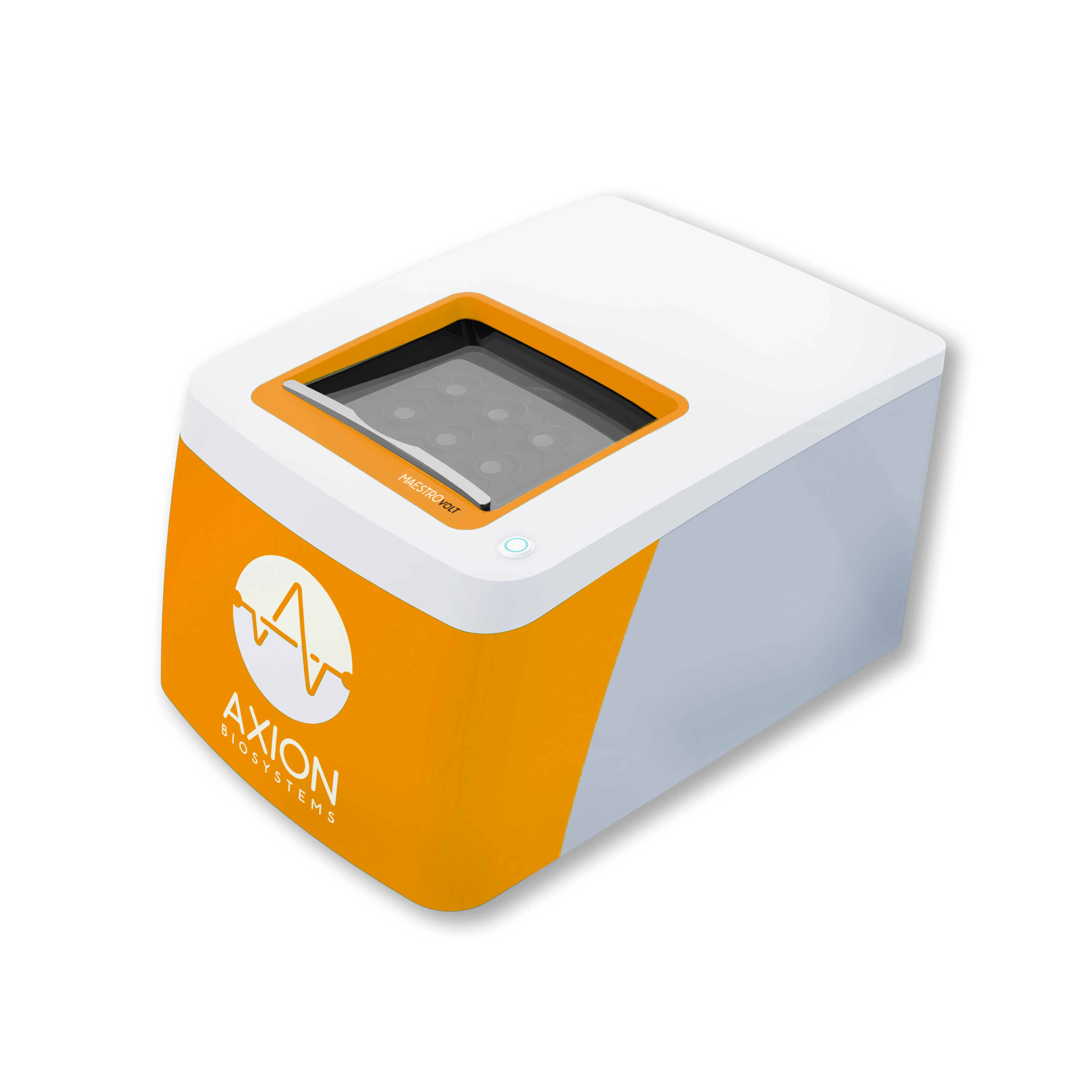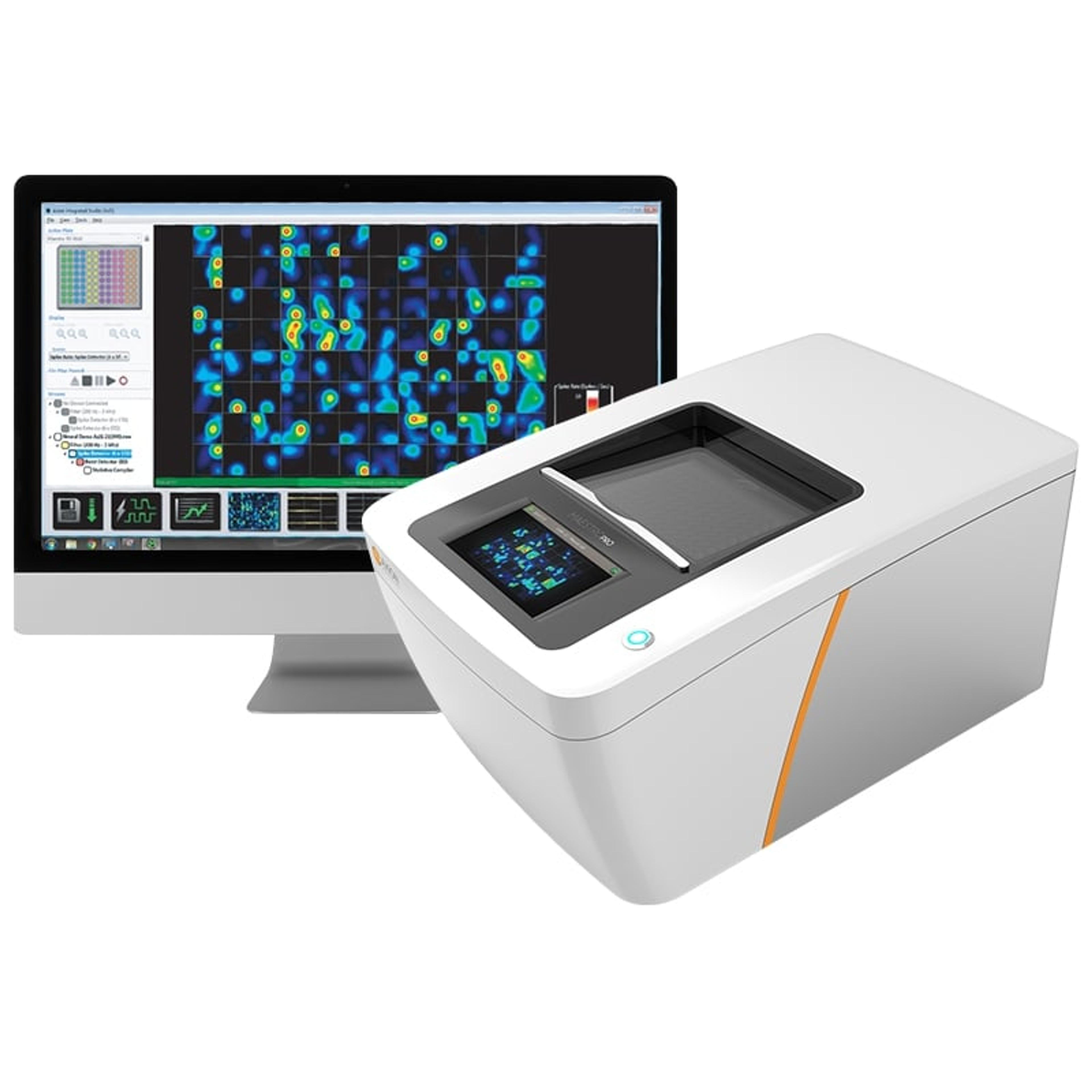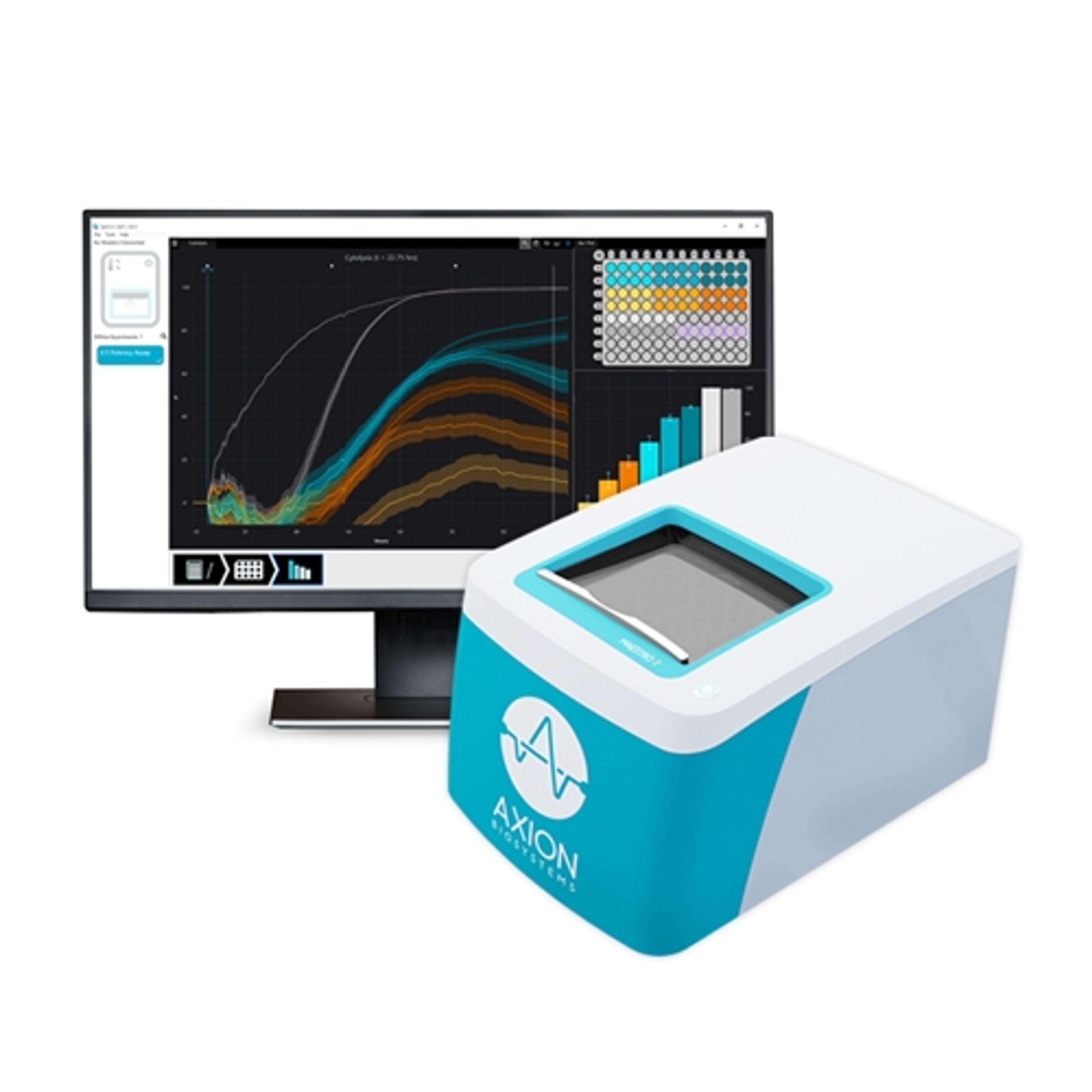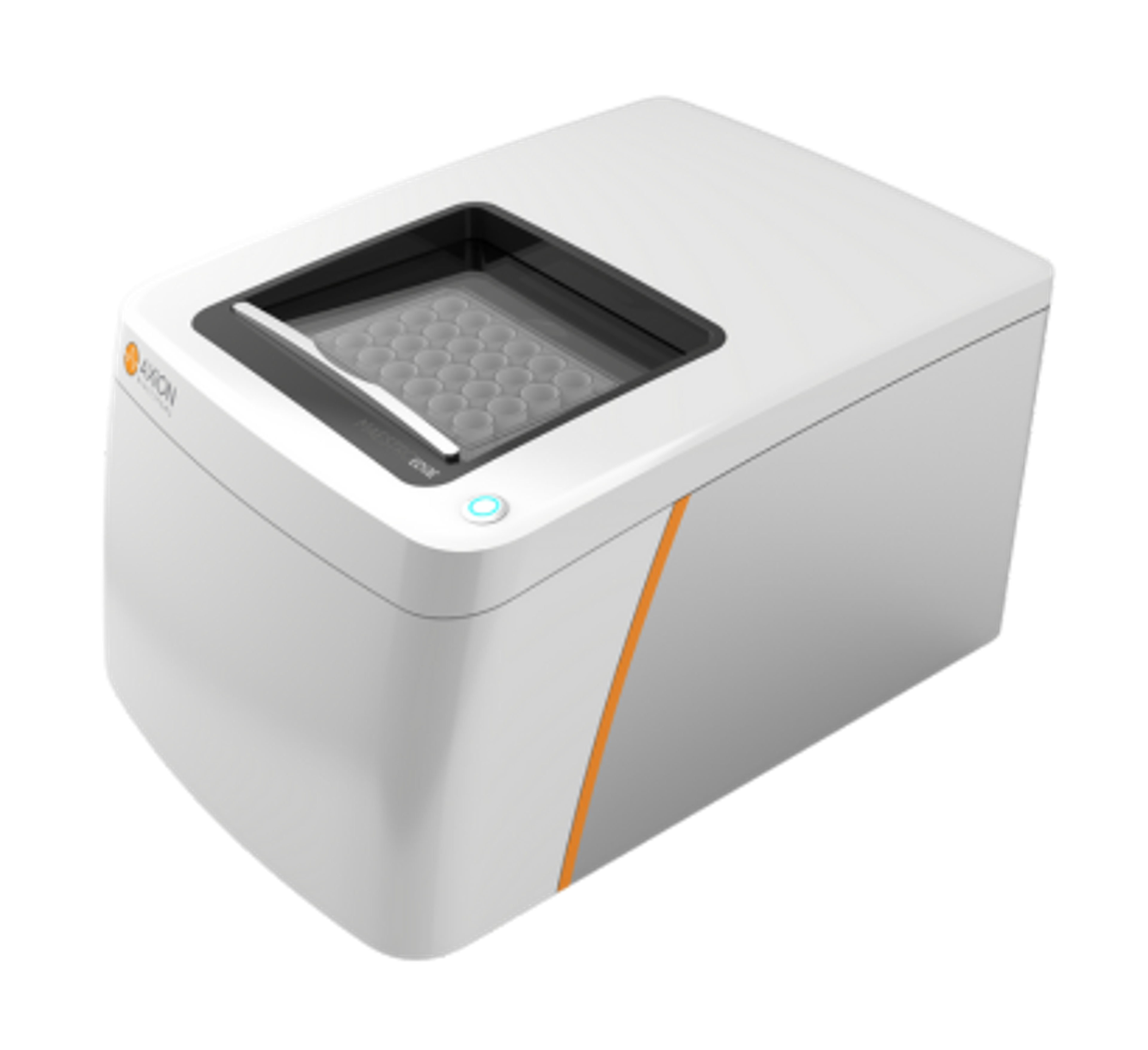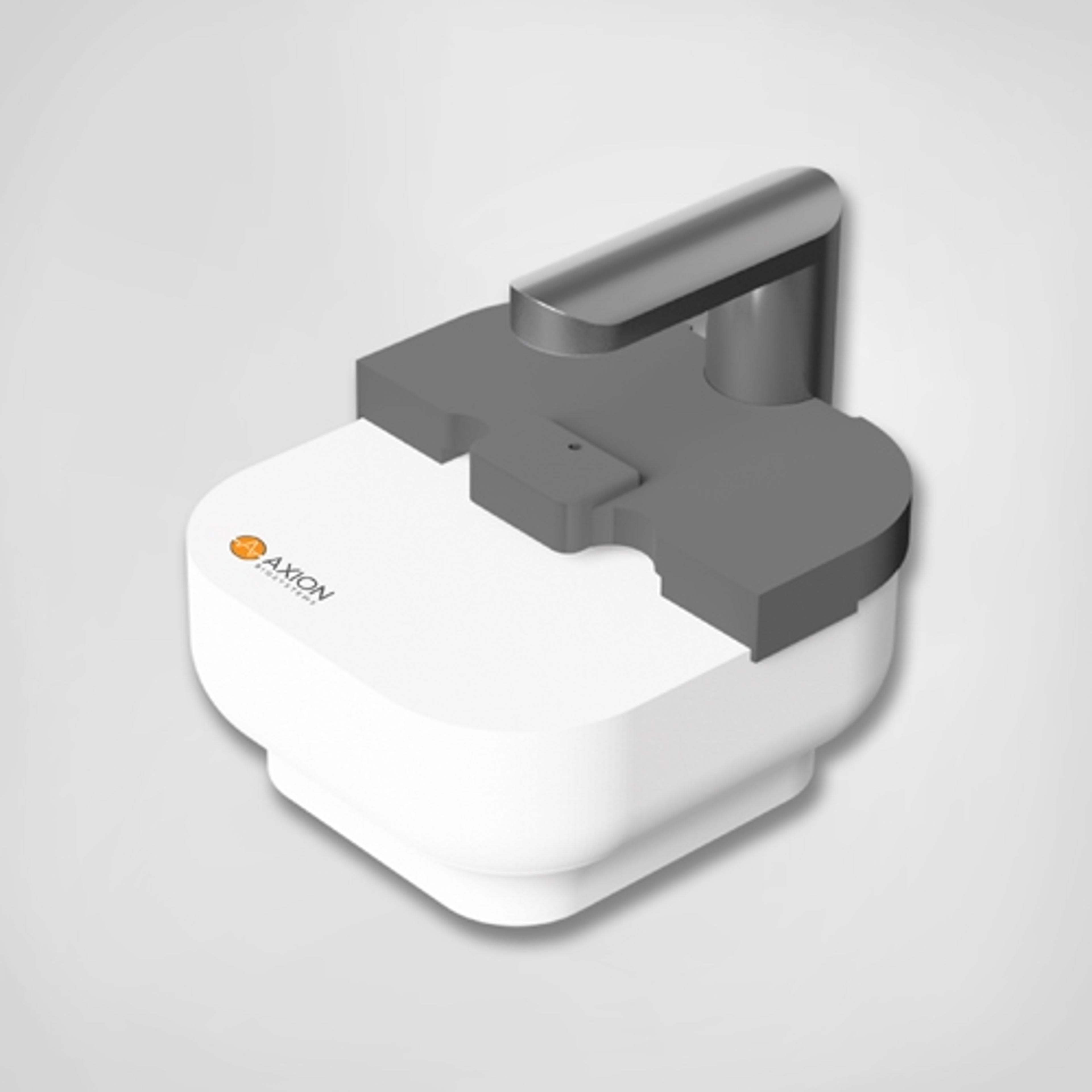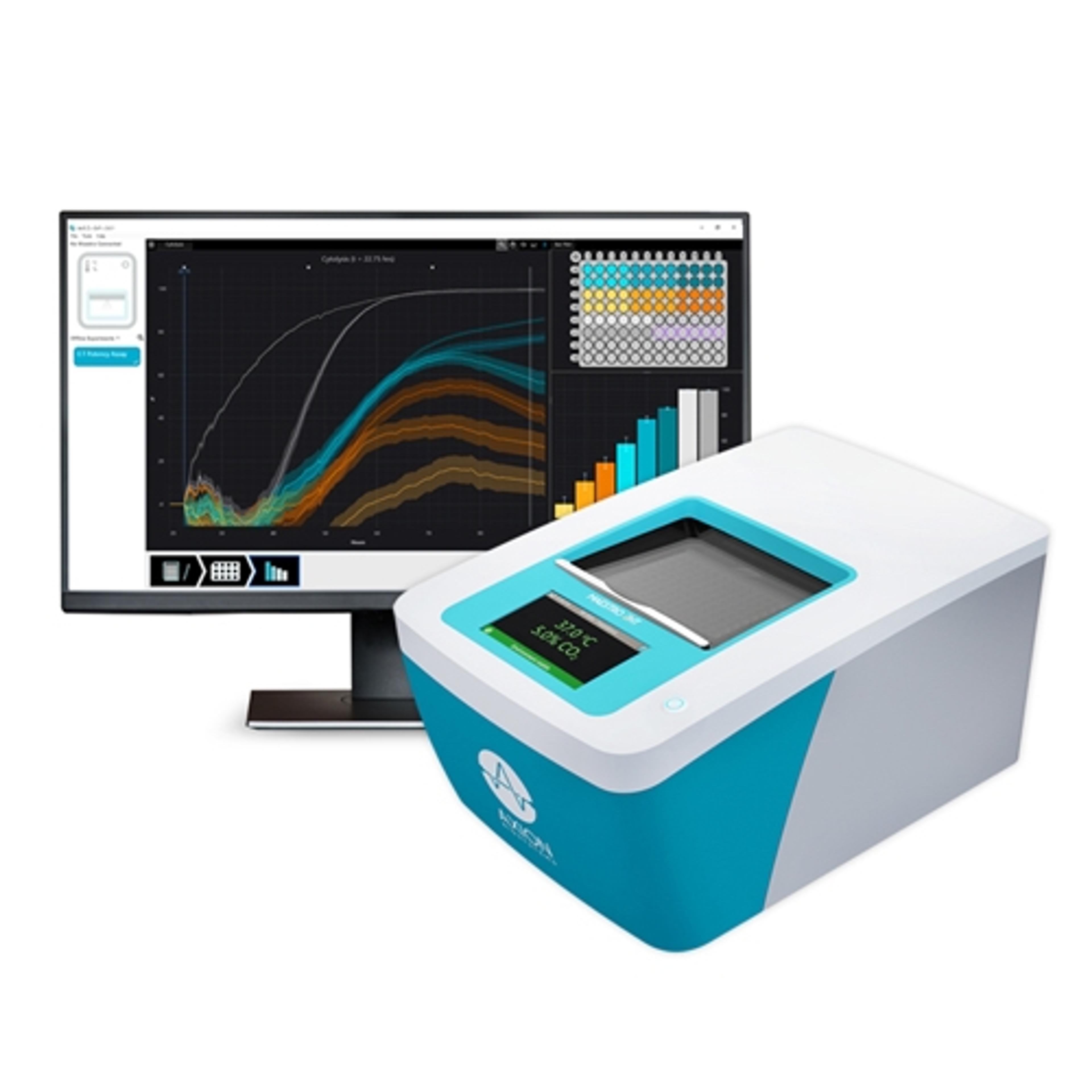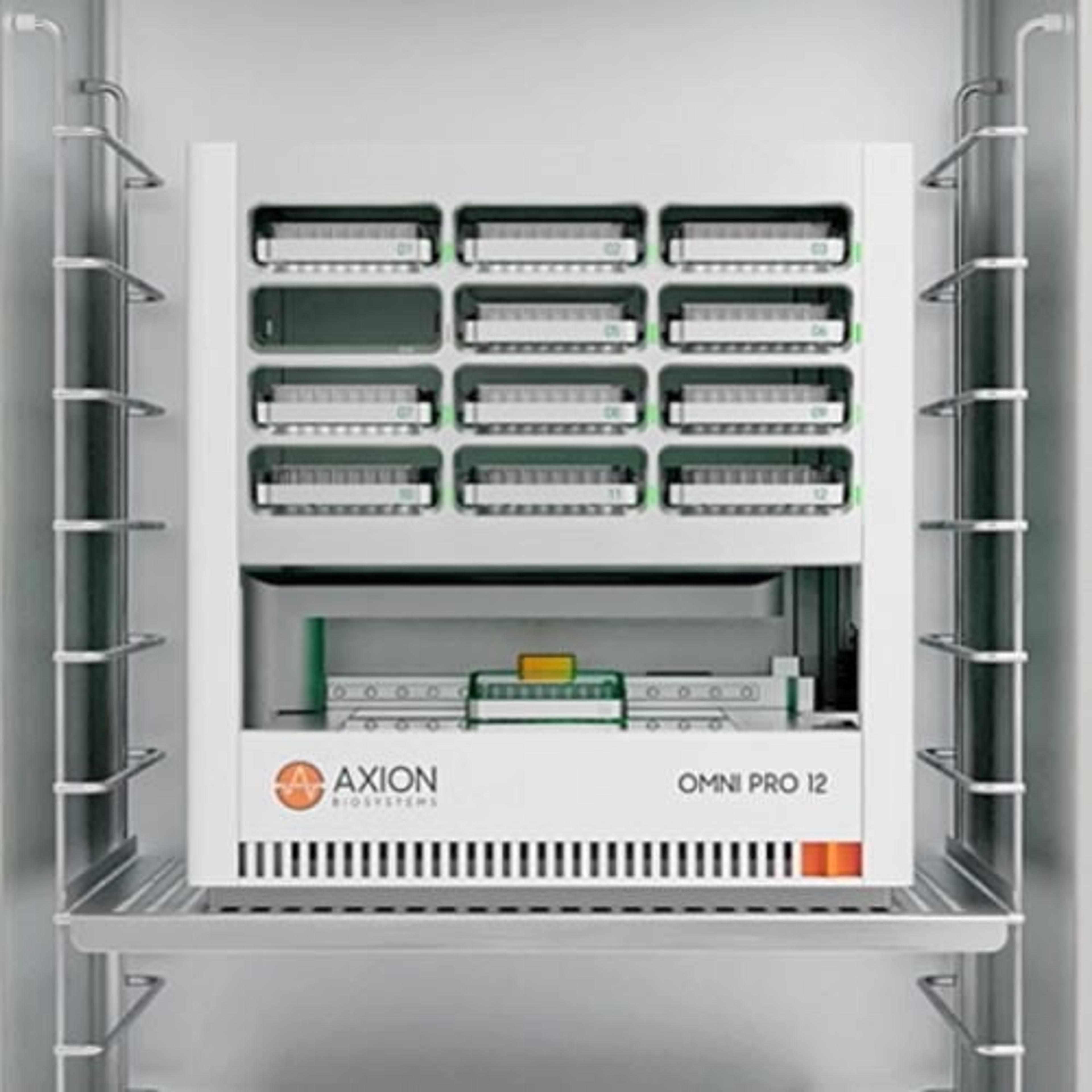Lumos Optical Stimulation System
Stimulate 24-, 48- or 96-well plates with up to four wavelengths: blue, green, orange and red. Standalone device and pairs with Maestro Pro™ and Edge™
High quality product. Good value for money.
Molecular biology
High quality product. Good value for money.
Review Date: 31 Mar 2022 | Axion BioSystems
Easy to use, great support.
Optogenetic stimulation of HiPSC derived neural spheres
The Lumos is a powerful system that is easy to use. The software is intuitive. The support team is very responsive to any questions I have about using the device.
Review Date: 7 Jan 2020 | Axion BioSystems
Good software, reliable device, happy with results.
Optogenetically stimulate dissociated DRG neurons
The Axion software made the Lumos incredibly easy to use. Additionally, the Axion team was incredibly responsive to any questions we had regarding the device and how to use it. For us, it was one of those few pieces of lab equipment we could plug in, turn on, and use with very little fuss. We paired it with Axion's OptiClear plates for imaging of our neurons post-light stimulation.
Review Date: 20 Dec 2019 | Axion BioSystems
Simple to control high-intensity light patterns without cross-talk between wells
Optogenetic stimulation of iPSC-derived neural cultures
Lumos is a snap to start working with right off the bat. The software makes it really easy to start controlling different lights with different colors and pulse patterns within a couple minutes. By hooking up a light meter under the plate to an oscilloscope, I could see that the light is controlled very precisely (microsecond precision) with really high max intensity reaching the bottom of the well. Perhaps the best thing for me was that the plate/lid design prevents light targeted to one well from bleeding over or reaching adjacent wells, which is pretty important for experiments.
Review Date: 19 Dec 2019 | Axion BioSystems
Lumos™ is a multiwell light delivery device allowing you to incorporate cutting-edge optical assay techniques, such as optogenetics, into your in vitro research. With individual control of light delivery in each well, Lumos provides market-leading light intensities from up to four wavelengths. Providing ultimate assay flexibility, light delivery within each well is fully configurable with finely graded output intensity waveforms updated with microsecond-scale precision. Light delivery is uniquely isolated within each well for fully independent assays across the microplate. Lumos also pairs seamlessly with the Maestro Pro™ and Maestro Edge™ systems for simultaneous optical control and electrical measurement of cell network activity.
KEY FEATURES
- High throughput — Simultaneous control of light delivery to each well of a standard SLAS-compliant 24-, 48-, or 96-well microplate.
- Fully configurable — Powerful on-board electronics enable each of the 96 (Lumos 24) or 192 LEDs (Lumos 48 and Lumos 96) to be independently controlled with finely graded output intensities that are dynamically adjustable on a microsecond timescale.
- Complete wavelength coverage — Four wavelengths per well span the visible spectrum for selective stimulation of the most commonly used opsins.
- Environmental control compatibility — Options for regulation of temperature and CO₂ enable extended benchtop experimentation.
- User friendly software — Intuitive “drag-and-drop” style blocks enable quick and easy design of light delivery patterns and selection of target wells.
- Topside light delivery — Delivery of light from above each well enables even light distribution and leaves the bottom of the microplate open for simultaneous electrophysiology, imaging, or other interfacing modalities.
- Industry-leading light intensities — Large dynamic range with minimal cross-talk between wells.
- Pairs with the Maestro MEA system — Seamless integration with the Maestro for optical control of cell activity during real-time recordings of functional responses.
Discover ground-breaking throughput, power, precision, and control in the first commercially available multiwell optical stimulation device. Incorporate cutting-edge optical techniques into your in vitro research using Axion BioSystems’ Lumos.
The Lumos system can be used in two general ways:
- Control of cell biology – Deliver light to Axion’s Lumos OptiClear™ plates, standard-format SLAS-compatible microplates with optical specializations and clear bottom for cell biology applications such as gene editing and cell signaling.
- Control of cell activity – Pair Lumos with Axion’s Maestro Pro and Edge platforms and deliver light to Axion’s Lumos MEA plates to precisely control networked excitable cells while simultaneously recording electrical responses.
Use Lumos to control cell biology
Control cellular biology on a high-throughput scale. Light-mediated control of biochemical, genetic, and cellular functions is an emerging tool in many research fields:
- Control intracellular signaling pathways
- Direct gene expression with light
- Edit genes with light-induced CRISPR/Cas9
- Influence growth and regeneration
Lumos ECbase is compatible with standard lab warming plates and has a built-in gas delivery port to enable a controlled CO₂ environment during Lumos Optical stimulation.
Use Lumos to control cell activity
Control cell activity with light. Optogenetics techniques use genetic targeting to express light-sensitive ion channels called opsins (e.g., ChR2) in targeted cell populations. Upon stimulation by a specific wavelength of light, these opsins can be activated to shift the cell membrane potential. Light of specific wavelengths can thus be used to activate or silence cell activity in targeted cell populations.
Advantages of optogenetic-mediated control of cell activity include:
- Artifact-free stimulation
- Precise control of cell activity
- Reduced experimental variability
- Cell-specific control
The most flexible in vitro optical stimulation system
A first-of-its-kind on the market, Lumos revolutionizes in vitro optical approaches. Lumos provides 24, 48, or 96 concurrent wells of stimulation and the ability to simultaneously use up to four different wavelengths of light per well at user-specified, precisely defined output patterns.
Axis Navigator - Stimulation Studio
The Neural Applications and Cardiac Applications modules support Lumos optical stimulation with Stimulation Studio in AxIS Navigator™. Enabling fast, flexible set-up, Stimulation Studio provides intuitive, visual stimulation programming in an easily accessible plate map format. Here, each of the LEDs can be independently controlled for intensity (1-100% max power) and duration (down to 100 microseconds), and stimulation protocols can be designed quickly and easily with a drag-and-drop interface.









